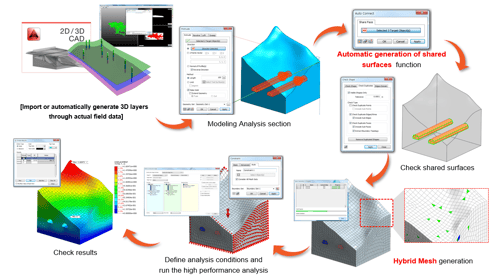Midas GTS NX: Semi Coupled Analysis: Slope & Dam Stability

Author: Angel Francisco Martinez
Publish Date: 27 Dec, 2021
Summary
Climate change has intensified weathering effects due to rain, leading to higher frequency of structural and slope failures designed by conventional methods (steady state seepage) based on static water level assumptions. However, the instability of a slope in unsaturated soils or a dam is closely related to rainfall (transient seepage) intensity. This has led to a growing trend of undertaking detail analysis of seepage reflecting the real rainfall events whose results are then used to analyze the safety factor of the slope under the rainfall condition or dam
stability during overfilled or draw down conditions. From this tutorial, the user will understand the workflow associated with checking slope and dam stabilities in relation to seepage-slope coupled analysis. The user will also learn the use of various basic functions of GTS NX in the process, which involves numerical analysis for slope stability by 2 methods. Result will also be compared to a plaxis 2D model.


Key Points
CAD import for 2D slope geometry
Use of Bedding Plane for generation of 3D slope geometry
Seepage transient analysis (boundary conditions within and outside of the ground change with time)
Seepage steady state analysis (boundary conditions within and outside of the ground remain constant with time)
Slope Stability by SAM (Stress Analysis Method)
Slope Stability by SRM (Strength Reduction Method)

Presentation Slides
| |
Speaker : Angel Francisco Martinez Category : Geotechnical Software : midas GTS NX Date : 2017-04-13 |






Add a Comment